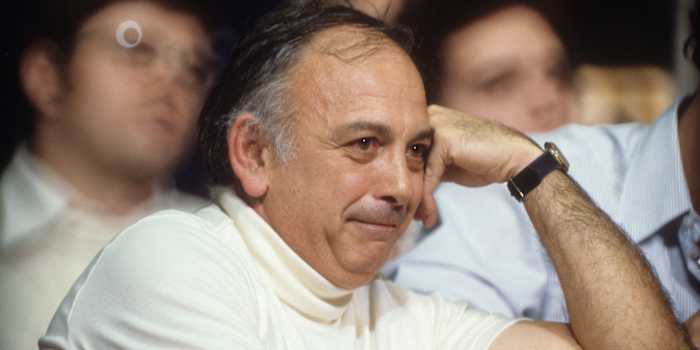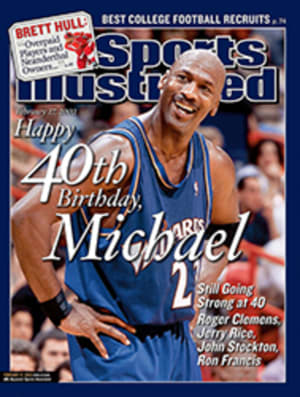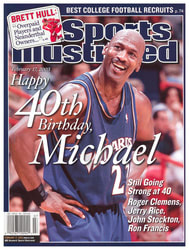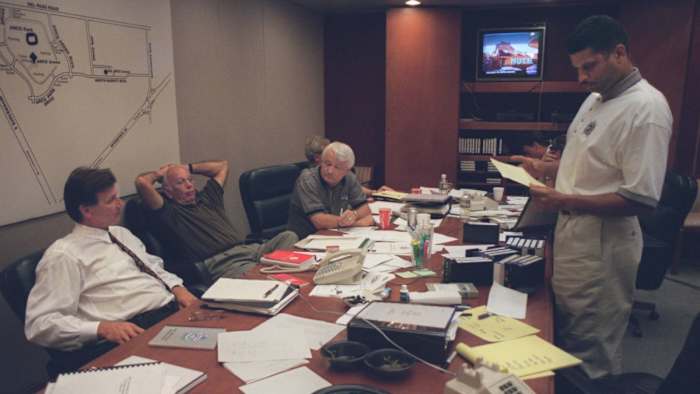It All Starts Here
For Bill Carmody the shock came just more than a year ago, on a cool November evening in the Piedmont. Carmody is the basketball coach at Northwestern, but he's known in coaching circles as the caretaker of the Princeton offense, the classic labyrinthine scheme he learned at the feet of Hall of Famer Pete Carril. On that night in Raleigh, Carmody and his assistants were astonished when they sat down to scout the second game of the Black Coaches Association Invitational. North Carolina State was using the Princeton offense. Their offense. Every bit of the breathtaking minuet: its backdoor cuts and dribble handoffs, its fade screens and wide-open layups. The Wolfpack had it down cold.
"Wow. They're running it," Carmody whispered, pen frozen in hand. "And they have the perfect guys to do it, skillful guys who can dribble and pass and shoot and cut."
But how did they get it? This wasn't something you could lift from a few viewings of videotape. And why now? For decades nobody had bothered to imitate Carril's offense. Oh, Princeton had its moments—winning the 1975 NIT, nearly upsetting Georgetown in the ’89 NCAA tournament, knocking out defending national champion UCLA in '96—but most coaches derided Carril's slowdown style as little more than a gimmick. "People thought you couldn't teach it to athletic players. They wouldn't have the patience," says N.C. State associate head coach Larry Hunter. Even when Princeton's run to a No. 8 ranking in '98 sparked new levels of national interest, the Sons of Carril kept their secrets in the family. “It's hard to get in," says Campbell University coach Billy Lee, one of dozens who tried, "kind of like the Mafia."
Suddenly, though, the secret not only got out, but it morphed into a genuine basketball movement. The New Jersey Nets reached last year's NBA Finals using a faithful copy of the Princeton playbook. Likewise, that N.C. State team made the NCAA tournament for the first time in 11 years, saving coach Herb Sendek's job. A high school outfit in Monument, Colo., Lewis-Palmer, had won 61 of its last 67 games through Sunday with the offense, while women's teams at Ohio State, Vanderbilt and Xavier were thriving under it too. At rural Gibson Southern High in Fort Branch, Ind., coach Jerry O'Brien puts his Titans through the Princeton paces, and even the district's sixth-graders run the offense. "It's good fundamental basketball," Nets coach Byron Scott says. "But it's different, and that's why it's special."
And it keeps spreading, not just through the NBA—in which the Sacramento Kings, Milwaukee Bucks and Minnesota Timberwolves also are employing Princeton concepts—but through every level of the game (map, pages 60-61). In addition to the programs run by coaches with ties to Carril (Princeton, Northwestern, Air Force), a growing number of Division I colleges have adopted the offense, from big-conference powers (N.C. State) to successful mid-majors (Miami of Ohio, George Mason, Samford) to smaller programs (Campbell, Eastern Washington, Western Carolina) hoping to ride it to the NCAA tournament. Why, even go-go Florida and Louisville, two of the nation's most explosive offensive teams, are running some of the trademark Princeton sets.
Yet Carmody watched N.C. State that night in Raleigh with mixed emotions. On the one hand, here was a moment to enjoy the ultimate in professional respect—imitation, of course, being the sincerest form of flattery. Yet he was also stricken by a deep and abiding fear. After all, as the Princeton offense goes mainstream, won't defenses become more adept at stopping it? In the long run, won't its triumph, in a misdirection play worthy of the scheme itself, sow the seeds of its own demise? Ruin its novelty? Forever save defenses from death by a thousand cuts?
"I like seeing the Nets run this stuff," Carmody says, his Conan O'Brien features tightening with angst, "but in a perfect world I'd prefer that no one else did it."
This is a story about basketball, but it is also about innovation, human nature and the fanatical drive to attain—and sustain—a competitive advantage. Above all, this is the story of a philosophy and its wholly unexpected transformation into a burgeoning fad. How did the oldest of old school game plans, an arcane quirk shrouded in secrecy, turn into what the New York Daily News recently called the "trendy" Princeton offense?
Like the rise of fashion vogue and the movement of the latest flu virus, the spread of the Princeton offense is best viewed as a social epidemic. In his groundbreaking best-seller The Tipping Point, Malcolm Gladwell describes the three types of agents responsible for social epidemics: Mavens, Connectors and Salesmen. "In a social epidemic, Mavens are data banks. They provide the message," Gladwell writes. "Connectors are the social glue: They spread it. But there is also a select group of people—Salesmen—with the skills to persuade us when we are unconvinced of what we are hearing."
For the Princeton offense to spread, it needed all three types: Mavens outside the Carril "family" to decipher and master every nuance of the scheme; Connectors to spread that knowledge to coaches across the country; and Salesmen to persuade the hoops cognoscenti that it could be successful at every level of the game, for high schoolers and pros, men and women, in up-tempo and slowdown attacks. Sure enough, that's exactly what happened.
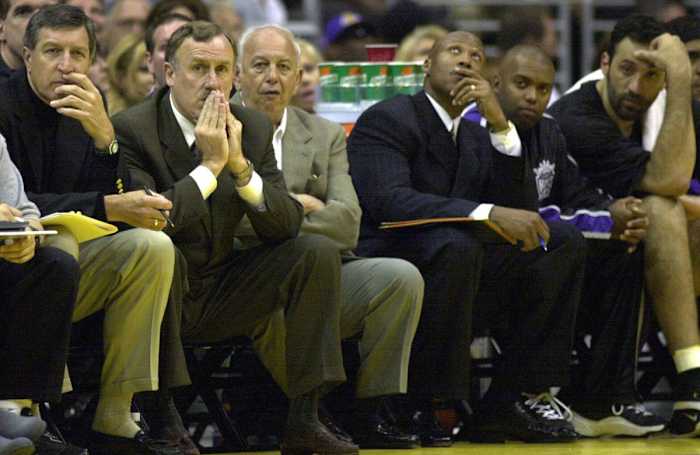
Carril, third from left, as an assistant coach with the Sacramento Kings in the NBA.
ZUMA Press/Imago Images
The Innovator
What is the Princeton offense? Master Yoda laughs. Pete Carril is 72 years old. His wispy white hair, throaty rasp and impish grin conspire to make him appear more gnomelike than ever. He's wearing a Kings sweatshirt—he has been an assistant for the team since 1996—and a baseball cap that reads yo! on the front. "I don't think it's that innovative," he says, all evidence to the contrary. "The basic difference [between this system and others] is that there's a greater use of cutting, and not much picking. It's supposed to take the tension out of a game, so five guys aren't just complaining about getting enough touches, all that bulls---. You know the ball's going to come to you at the right time. If you're not skillful you can't play in this offense, because everyone is the point guard. The minute you have the ball in your hand, you're expected to see what to do, to read the defense."
To hear Carril tell it, his offense is a hodgepodge of borrowed philosophies. When he began coaching at Easton (Pa.) High in 1952, his teams ran the five-man weave used by La Salle's Ken Loeffler and Villanova's Al Severance. "As it went on, we picked up things," Carril says. There was the shuffle cut run by Albany's Dick Sauers, the low-post elbow screen run by Red Auerbach's Boston Celtics ("Sam Jones hit so many bank shots coming off that elbow screen") and the dribble handoffs of Red Holzman's New York Knicks. From Butch van Breda Kolff, his predecessor at Princeton, Carril borrowed another touch, moving his center from the low post to the high post and clearing space in the lane for backdoor cuts.
Carril's genius was in the way he seamlessly linked all those sets, forcing opponents to pick their poison, like a soccer goalkeeper who has to move one way or the other when facing a penalty kick: Do you want to give up open outside shots, or do you want to defend the perimeter and be bamboozled by backdoor layups? Combined with Princeton's monotonous pace, the approach always gave Carril's teams, without the benefit of athletic scholarships, a chance to beat the best teams in college basketball. "Coach Carril has been very effective at choreographing sequential movement in ways that create counters to counters," says Gary Walters, the Princeton athletic director who played for Carril in high school. "When you defend one portion of the sequence, you set yourself up for having more trouble defending the next step."
The offense isn't for everyone, of course, particularly at a time when mastery of fundamentals has reached an alltime low. In its purest form, it requires a center who can shoot from the outside and deliver one-handed bounce passes on a dime to backdoor cutters. It requires an agile power forward who can cut, pass and shoot, since the offense makes no distinctions between its four nonpost players. Not least, it requires selfless players who can think. "It's very time consuming," Carmody says. "I don't spend any time in practice on defense. At all. Ever. But you're always guarding the other team in practice, so we get it done."
Over three decades and 525 wins, naturally, Carril realized there was treasure in the Princeton playbook, and he developed a pathological fear that rivals would steal his creation. Wasn't that why he had closed his practices all those years? Why, in a violation of coaching protocol, he often refused to exchange game tapes with other schools? Why, whenever another coach called to inquire about the offense, Carril would unleash a volley of invective ("Do what I did, and f------figure it out!") and hang up the phone?
The Maven
The first outsider to infiltrate Princeton's inner circle was Jimmy Tillette. This was in 1996, when Tillette was an assistant at Samford, a Baptist college in Birmingham. An avowed egghead and lover of Beethoven, Chopin and Wagner—he named his son Tristan after the hero of Wagner's opera—Tillette is possessed of a relentless curiosity about all things hoops. In other words he's the perfect Maven. "I'm the only coach in Alabama who doesn't play golf," Tillette says. "I had to do something in the spring, and I always liked to take another team and figure out how they do what they do. So one spring I picked out Princeton." For weeks Tillette spent six hours a day poring over tapes, compiling 99 pages of notes and then distilling those into 35 laminated sheets.
When Princeton and Samford each appeared at the Iowa State Holiday Classic in December 1995, Tillette joined Carril and Carmody for dinner. Intrigued by Tillette's notebook, Carmody invited him to Princeton the following year, after Carmody had taken over for Carril. "Tillette was the guy we talked with a lot," Carmody says. "Every day I get four or five e-mails, phone calls or letters: Can you send me your offense? I just throw 'em in the garbage. I can't deal with that, because, you know ... do something. Work with it. That's what Jimmy did. He already knew the stuff, where to go and what to do, but he didn't quite get all of it. So he came up, and we spent a couple of days together."
The results were startling. In 1998-99, Tillette's second season as Samford's head coach, the Bulldogs went 24-6 and reached the NCAA tournament—a feat they had not accomplished in six years under Tillette's predecessor, John Brady, who had left for LSU. The next year Samford went 21-11, led the nation in field goal percentage (50.3) and made another trip to the NCAAs. "The concept is so solid," Tillette says. "You don't have to beat guys off the dribble or go one-on-one. It's a question of sharing the ball. Our assists-to-baskets ratio is out of sight. Three out of four baskets come off an assist." So dazzling was Samford that Carmody's brother Frank called him one night and said, "Hey, Billy, you ought to watch these guys: They're running it better than you are!"
Though Samford's surge drew some small-scale media attention, it hardly spurred a national wave of converts to the Princeton offense. Tillette simply honored Carmody's request to keep it in the family. At one point Tillette even rebuffed Birmingham Southern coach Duane Reboul, a friend of 40 years and his former boss at De La Salle High in New Orleans. "I'm very aware of my loyalty to Princeton," Tillette says. "If you want to watch practice and glean some things on your own, that's fine. But I'm not one for sharing."
To find a coach who is, you need to fly to Columbus, Ohio, rent a car and drive 90 minutes east, to the tiny, brick-paved burg of New Concord, proud home of Senator John Glenn and Division III Muskingum College.
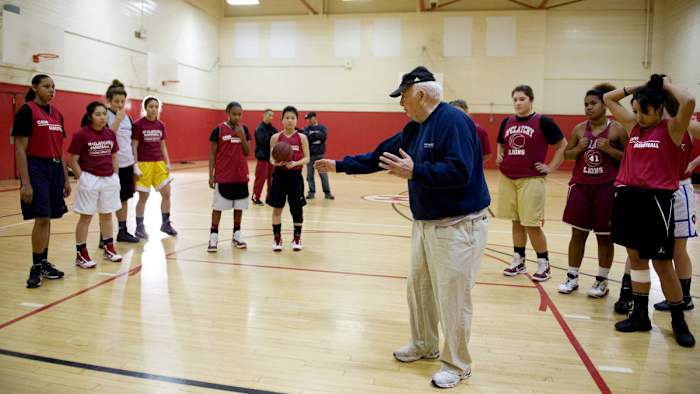
Pete Carril teaches players at McClatchy High School in Sacramento in February 2011.
ZUMA Press/Imago Images
The Connector
For the Princeton offense to really start spreading, it needed someone like Tillette, who had mastered its manifold intricacies. Only, that someone had to be well-connected in the coaching world and—most important—willing to share. In other words it needed someone like Jim Burson.
Few basketball fans know of Burson, the coach at Muskingum for the past 36 years, but his colleagues do. Burson worked with Bob Knight on the 1984 U.S. Olympic team. His son, Jay, starred at Ohio State in the late '80s under Gary Williams, now the Maryland coach. Each summer Burson visits and learns from one of his brethren, from Knight to Cincinnati's Bob Huggins to Michigan State's Tom Izzo. "I've had a great life, and I've done it in anonymity," Burson says, "but if you got down to Duke and asked Coach K if he knew Jim Burson, he'd say, 'Yeah, I know Coach.'" At 61, Burson looks a lot like Hugh Hefner, and he is just as social (though not, he'll have you know, with the ladies). He gives clinics each summer for his former players who are still involved in the game, has presided over the Division III Men's Basketball Committee and in three years is slated to become president of the National Association of Basketball Coaches.
In the summer of 1998 Burson traveled to Princeton to view the offense up close. "Pete Carril's offense is absolute genius," Burson says. "They'll give you some of the raw information"—game tapes, mainly—“but it's like they're giving you the parts to a new car and saying, 'Now put it together.' Well, we took the time to put together all the parts." Two years and several hundred hours of tapes later, Burson and assistant Greg Morland had, as Burson puts it, "cracked the code." They called their version Optional Phasing—a nod to its sequences of reads—and they gave the offensive sets fishing terms (befitting the school's mascot, the Fighting Muskies) like rod-and-reel and bait-and-tackle. Their center stationed himself in any one of four post positions:
hook (high), line (low), sinker (side) or bobber (top of the key). "It was a forgery," Burson says, "but we felt good about it, like we had discovered gold."
Like Tillette, Burson had instant success running Princeton (Muskingum went 15-11 in 1998-99, its first winning season in seven years), but his national impact would come as a Connector. Simply put, he shared—an approach Burson had adopted in '67 when he visited a practice conducted by legendary Kentucky coach Adolph Rupp. "Rupp gave me the seven diagrams of his offense," Burson recalls. "[Back then] I never could run them because I wasn't smart enough, but he gave them to me."
In the spring of 2001 Burson got a call from N.C. State. Larry Hunter, a Wolfpack assistant, had known Burson from his days at Wittenberg and Ohio, and Burson had helped Hunter prepare for a game against Princeton in '99. N.C. State had fallen on hard times, and coach Herb Sendek was desperately seeking a way to compete against his more talented ACC rivals. Sendek had already lost twice to Princeton, and the offense fascinated him. Yet there were still parts that he couldn't fathom. "There's not much secrecy anymore because of clinics, camps and TV, but a lot of coaches have watched this offense a long time and still can't figure it out," Burson says. "I didn't either, the first hundred hours."
Burson hopped a plane to Raleigh. "The first thing I did there was sit down and say, 'What have you done?'" he says. "Herb said he had looked at 12 tapes and broken them down. His notes looked like my scribbled notes did, back in '98. I said, 'Good, now explain that.' He showed me, and I said, 'Now what?' He said, ‘That's where I am.' And I told him, 'You're really close, but you don't have any idea of what you're doing.' Larry laughed at that, and I said, 'I'm not saying that to be pompous. I'm just telling you, you can't run it with what you know. Let me show you.'"
For the rest of the afternoon Burson beguiled Sendek with his presentation, which included a 15-minute videotape and a boiled-down 20-page playbook he calls the Holy Grail, whose principles are distilled on the opening page. Sendek fell for it hook, line and sinker. "He said, 'Oh, my God, I didn't even understand it. I didn't understand it!'" Burson says of Sendek's Eureka moment. The Wolfpack coach had known most of the Princeton sets; he just hadn't solved the puzzle of how to link them. (As Burson put it, rod connected to reel, while bait went with tackle.) "Would he have done that eventually by himself?" Burson asks. "I think so. What we did was save him a year's work."
And, to a large degree, Sendek's job. Combining the Princeton sets with a full-court press, a faster pace and whip-smart players who could cut, pass and shoot, his team went 23-11, advanced to the ACC tournament final and reached the second round of the NCAA tournament. What's more, the Wolfpack showed that you can score with the Princeton offense, averaging 75.4 points a game (the most in Sendek's six-year tenure).
Back in Ohio, Jim Burson watches the Wolfpack and smiles. It's his biggest success story as a Connector, and yet it's far from the only one. In the past three years, Burson has also shared the Holy Grail with several D-I colleges—Miami of Ohio, George Mason, Campbell—and "about 30" other teams, from the high school to small-college levels. As Burson says, "It's out now: Burson broke it down and identified all the parts and made it simple. Northwestern's not going to give you anything. Princeton's not going to give you anything. Burson will give it to you, but only if you've studied it. If you want to come up here and show me that you've paid some dues, then I can give you the Grail."
Burson vows he'll never charge for his services—N.C. State covered his airfare, nothing more—but that hardly means he isn't compensated in other ways. For starters, sharing his knowledge burnishes his image as a coaches' coach, a respected sage in the fraternity. Then there's the quiet satisfaction he draws from seeing more teams play winning fundamental basketball. "It's such a neat thing to watch," he says. And certainly N.C. State owes him an immense debt of gratitude, part of which Sendek has already repaid. He recently hired Morland, Burson's former assistant, as his video coordinator.
Of course, there are other Mavens who double as Connectors. Cal Luther, who ran a version of the Princeton offense at Tennessee-Martin, has shared his knowledge with Stetson, Satellite Beach (Fla.) High and NAIA Westmont College in Santa Barbara, Calif. Likewise, Steve Baker, a coach at Loyola Blakefield High in Towson, Md., has compiled a 100-page dossier on the Princeton offense, along with a two-hour instructional tape; he recently sold copies to one of his best friends, Tennessee assistant Kerry Keating, who says he'll use the system when he gets a head coaching job.
None of those strains, however, can compare to the vast web being spun by the Division III coach who's changing big-time college basketball precisely because he's so well-connected. In the language of epidemics, Jim Burson is the Patient Zero of the Princeton offense.
The Salesmen
Still, Burson's efforts don't explain how the Princeton offense arrived in the NBA, nor how coaches came to believe that it could work in the fast-paced pro game. It needed a Salesman, and that man was, ironically enough, Master Yoda himself.
Coaches—even Princeton coaches—are an itinerant bunch. Since Carril was hired by Kings president Geoff Petrie (one of his old players) in 1996, his former assistants have moved on to the top jobs at Northwestern (Carmody), Air Force (Joe Scott) and Princeton (John Thompson III). Carmody recalls a conversation he had in the late '90s with Van Breda Kolff, who gleefully predicted a controlled spread of the system: "The next step is to get jobs for everyone, and they'll [hire] three or four guys each, and soon you'll have these little pods all around the country. And then basketball will be fun to watch again."
No "pod" of the Princeton offense has been more fascinating to follow than the one Carril has established in the NBA in his quest to bring his five-man passing game to a league dominated by me-first 'tudes, isolation plays and pick-and-rolls. For years, though, Carril had maintained that his creation would in fact work beautifully, given the speed and athleticism of NBA players. “Michael Jordan would be one of the great beneficiaries of this," Carril says, "because he's totally fundamentally sound."
In the end it took four sales over a five-year period to seal the deal. First, Carril convinced Eddie Jordan, then a fellow Kings assistant, over a season's worth of breakfasts, lunches and late-night bus rides. Jordan was elevated to head coach, and though the Kings dumped him in 1998 after one full season—injuries had doomed his version of Princeton, proving a Van Breda Kolff adage ("It's not what you do, it's who's doing it")—Jordan still believed in the system when he joined the Nets as an assistant in '99. Two years later, he persuaded head coach Byron Scott to let the Nets run part of Carril's scheme in the NBA summer league. They finished 6-1. Intrigued, Scott timed the offense against the shot clock during the coaches' pickup games, and it came in under 24 seconds. He decided to take the leap.
"It was easy to apply to the NBA game," Scott says. "It just came down to finding the right team to do it. When we made the trade for Jason [Kidd], I thought it would work. We had a point guard who could run it, who was bright enough to understand the ins and outs of the offense. As long as you can get your star player to buy into the system, everyone else will follow."
Sure enough, Kidd thrived in the offense, and so did the Nets. Scott and Jordan made only a few tweaks in Carril's sets, throwing backdoor lobs to the rim instead of bounce passes, setting up guards for post-ups and occasional pick-and-rolls, and relying more on the passing of Kidd than on the traditional Princeton-style center. The Nets could easily segue from the fast break into their five-man motion. Displaying remarkable balance—their top three scorers averaged between 14.7 and 14.9 points a game—the Nets won 52 games, doubling their total from the previous year. The Los Angeles Lakers may have won their third straight NBA title, but New Jersey was the story of the season.
The fourth and final sale—to skeptical NBA observers—had been made on the floor. While Carril would have preferred that his Kings (who were knocked out by the Lakers) had reached the Finals, he could take heart in the appearance of two Princeton offense teams in the NBA's final four. He had been right all along. "I've been watching NBA games for the last 50 years," Carril says, "and the number of times I heard the word backdoor the last two years exceeds the total of those other 48 years combined."
In December, Bill Carmody and Northwestern returned to Raleigh to play N.C. State. The Wolfpack won the battle of Princeton offenses easily 74-49, but the most telling statistic was this: N.C. State did not allow a single backdoor layup. "We knew exactly what they were going to do," Wolfpack guard Julius Hodge explained afterward. Is the novelty already gone? Was Hodge confirming Carmody's worst fear? The secret is out, after all. Even Carril has released a video detailing his philosophies. As Larry Hunter says, "I think you'll see all sorts of hybrids of this offense take off, just like you did with the motion offense."
Yet Carmody has hope. Remember, the innovators can always keep innovating. "Every day we're trying new stuff," he says. A smarter brand of basketball demands a more intelligent coach. Jimmy Tillette is fond of quoting Schopenhauer, Plato and Kant in his press conferences. Herb Sendek graduated from Carnegie-Mellon with a 3.95 grade point average. Jim Burson has a Ph.D.
Carril's own book is called The Smart Take from the Strong, though it's safe to say he's tickled that the masses now take from him. Handed a copy of Burson's Holy Grail, Master Yoda pulls on his glasses, leafs through the laser-printed pages and shakes his head. "Ay yi yi, this is unbelievable," he finally says, betraying a flicker of a smile. "Just goes to show you man's ingenuity."
